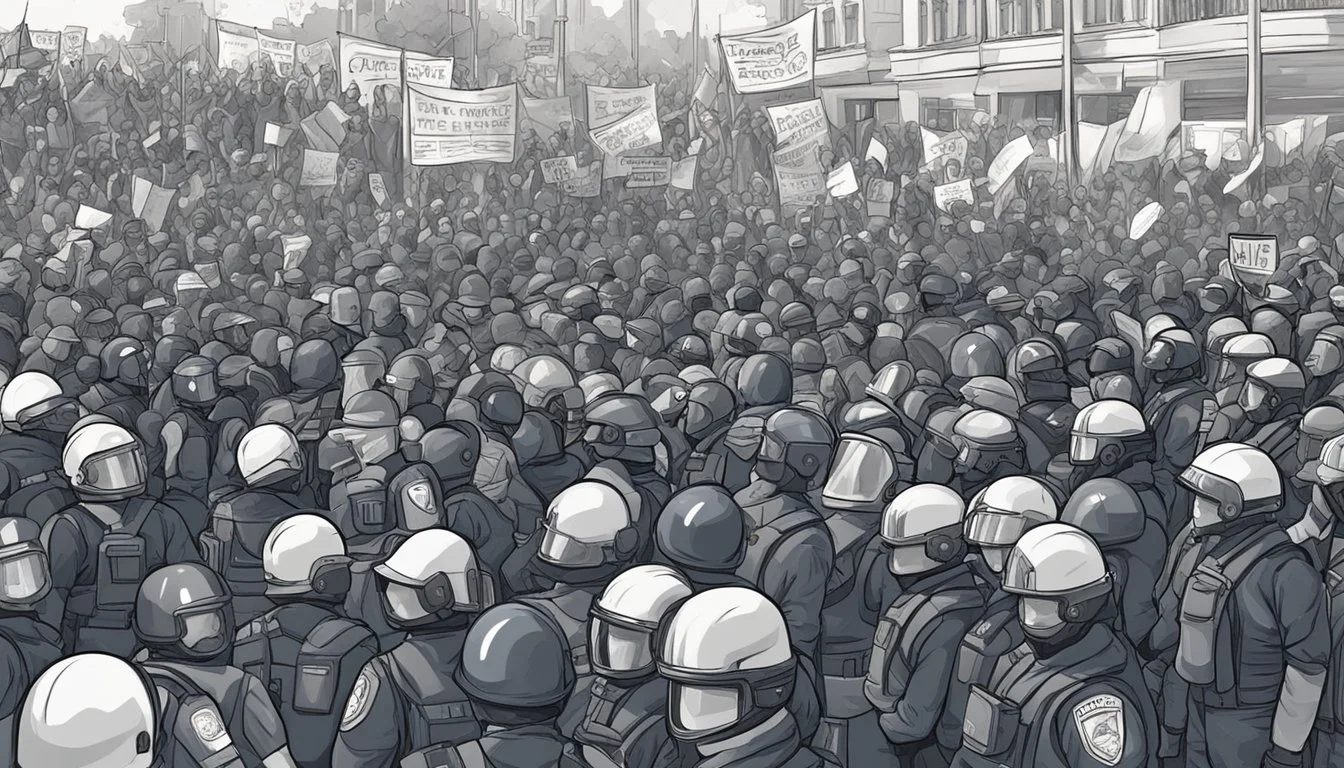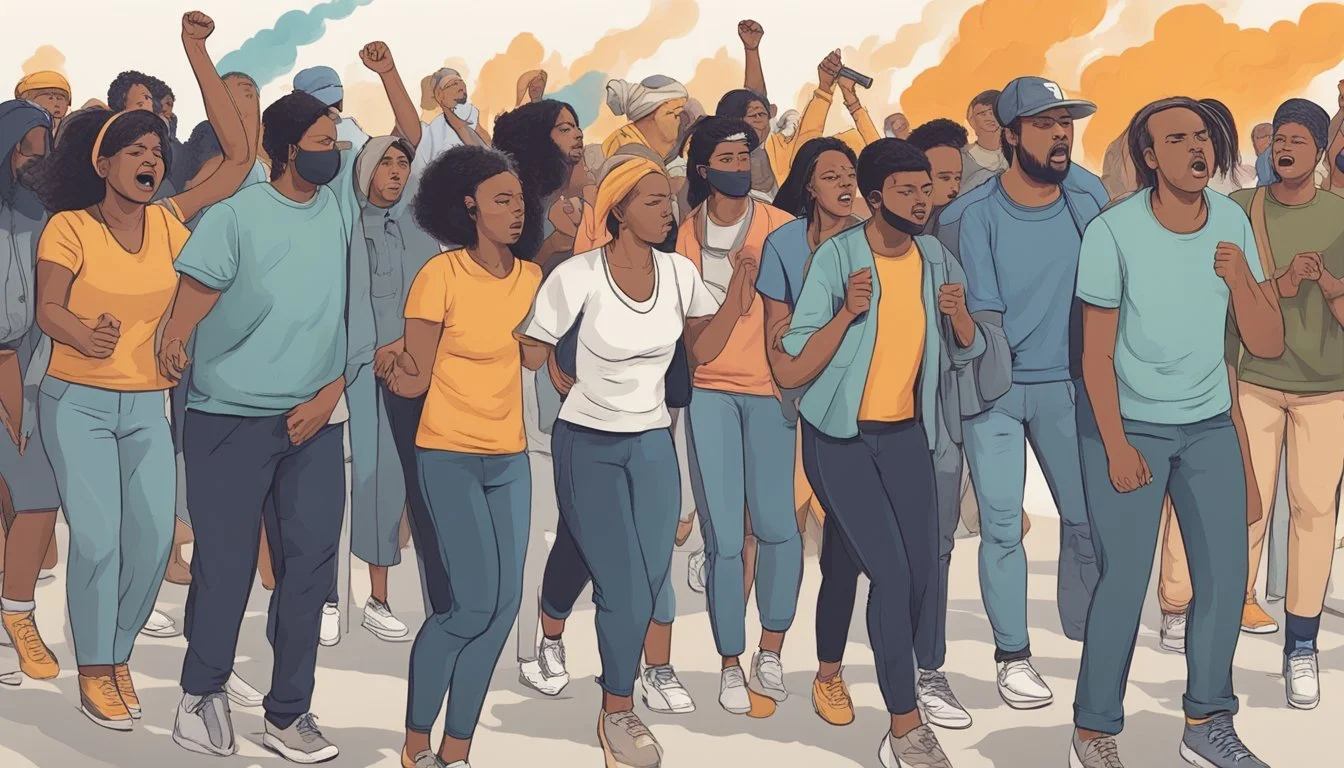4 Types of Trauma That Can Occur in Activism
Understanding the Impact
Activism, while often seen as a noble and empowering pursuit, can significantly impact mental health. The passion for driving social change and confronting injustice can bring about various stressors and emotional challenges that can lead to different types of trauma. How do activists navigate the emotional and psychological tolls associated with their efforts?
Understanding these types of trauma can provide valuable insights for activists and those supporting them. Insights into the emotional effects and coping mechanisms can help in fostering resilience and ensuring that the drive for social justice remains sustainable.
1) Vicarious Trauma
Vicarious trauma occurs when individuals absorb the emotional pain of others during activism. This type of trauma is often experienced by those who support victims of distressing events, such as activists.
It is marked by unwelcome thoughts, nightmares, and social withdrawal. Many find themselves avoiding topics related to the trauma they are working against. This response is linked to prolonged exposure to traumatic stories and experiences.
Vicarious trauma can significantly impact one's well-being and mental health. Activists might feel overwhelmed by the continuous exposure to others’ hardships. This can lead to emotional exhaustion and a reevaluation of previously held beliefs.
Recognizing the symptoms is crucial for prevention and recovery. Activists might start missing work or distancing themselves from social connections. Understanding these signs can lead to effective coping strategies.
For more information on the symptoms and impacts on mental health practitioners, see Vicarious Trauma: Causes, Symptoms, and How to Cope. Those in helping professions, including activists, need to address these symptoms to maintain their mental health.
2) Burnout
Burnout is the result of chronic stress experienced by activists. This condition leads to feelings of irritation, lack of motivation, and emotional disturbances. It typically occurs when activists face sustained periods of intense effort and emotional investment without sufficient rest.
Burnout has multiple stages. The initial stage, often called the "honeymoon" phase, is marked by excitement and high commitment to tasks. Over time, continued stress without adequate recovery leads to more severe symptoms.
Activists might benefit from therapy or specialized workshops focusing on burnout or empowerment. These resources aim to build resilience and provide necessary support.
It’s essential to recognize early signs such as constant fatigue, disillusionment, and reduced performance. Taking regular breaks and practicing self-care can help mitigate these effects.
Burnout is not just physical but involves emotional and mental exhaustion too. Activists may also feel intense frustration and hopelessness, diminishing their effectiveness and well-being. Addressing these symptoms promptly is vital for long-term sustainability.
Professional assistance from mental health professionals can effectively treat burnout, providing activists with strategies to manage stress. Breaks from activism to enjoy personal activities can be particularly beneficial in preventing burnout.
3) Compassion Fatigue
Compassion fatigue is an emotional and physical exhaustion that can lead to a diminished ability to empathize or feel compassion for others. This is a common phenomenon in activism where individuals are constantly exposed to the hardships and suffering of those they aim to help.
Those experiencing compassion fatigue might notice they have become less sensitive and more detached. It can result from continuous exposure to traumatic events or the chronic stress of working in a high-demand environment. Activists are particularly vulnerable due to their close engagement with the issues they are passionate about.
Signs of compassion fatigue include irritability, feelings of helplessness, and a reduced sense of accomplishment. These symptoms can significantly impact an activist's mental health and overall effectiveness. Recognizing these signs early is crucial for taking proactive measures to prevent its progression, such as engaging in regular self-care and seeking support.
Effective strategies to mitigate compassion fatigue include setting boundaries, taking breaks, and participating in stress-relief activities. Activists can also benefit from mindfulness practices and connecting with supportive communities.
By addressing compassion fatigue, activists can sustain their capacity to care for others without sacrificing their well-being. For more information, consider the insights provided by literature on compassion fatigue resilience.
4) Secondary Traumatic Stress
Secondary Traumatic Stress (STS) occurs when individuals are exposed to the trauma of others. It affects those who engage with trauma survivors, such as activists, counselors, and healthcare workers.
Those experiencing STS might feel emotional distress or symptoms resembling Post-Traumatic Stress Disorder (PTSD). Common triggers include conversations about trauma, as well as exposure to traumatic stories or content.
STS is recognized as a common occupational hazard in fields that deal with trauma. For example, professionals working with traumatized children often face secondary traumatic stress.
The emotional burden of STS can be severe enough to interfere with one’s ability to work or engage in daily activities. There is an increased risk for those who have a deep desire to help others who are suffering.
Awareness and self-care are essential in managing STS. Strategies may include seeking professional support, engaging in regular self-care routines, and setting boundaries to mitigate emotional exhaustion. Learning to recognize the signs early can prevent long-term mental health issues.
Understanding Trauma in Activism
Trauma in activism can manifest in various forms and significantly affect individuals involved in social action. Identifying the types and symptoms of trauma is crucial for addressing the mental health needs of activists.
Defining Trauma
Trauma refers to the emotional response to deeply distressing or disturbing events. In the context of activism, trauma often arises from witnessing or experiencing violence, systemic oppression, or repeated exposure to stressful environments.
Activists can suffer from trauma due to direct encounters with police brutality, harassment, or while witnessing community suffering. They may also experience secondary or vicarious trauma when consistently exposed to traumatic stories and images. Recognizing these experiences as legitimate forms of trauma is essential for providing adequate support.
Common Symptoms and Effects
Symptoms of trauma in activists can include both psychological and physiological responses. Common psychological symptoms are anxiety, depression, and PTSD, characterized by avoidance, intrusive thoughts, and emotional numbing.
Physiological effects might include chronic fatigue, headaches, and other stress-related illnesses. For example, an activist with PTSD might avoid conversations or places that remind them of distressing events and lose interest in activities they once found meaningful.
These symptoms can seriously impact an activist's ability to continue their work, potentially leading to burnout or a complete withdrawal from activism. Recognizing and addressing these symptoms through trauma-informed approaches is critical for sustaining long-term activism and ensuring the well-being of those involved.
Secondary Traumatic Stress
Secondary Traumatic Stress (STS) involves emotional duress experienced by individuals who hear about the trauma of others. This often affects activists who work closely with traumatized populations, resulting in significant psychological impacts.
Causes and Triggers
STS arises primarily from repeated exposure to others' traumatic experiences. For activists, this can involve listening to stories of abuse, violence, or injustice. These repeated emotional exposures can lead to symptoms similar to Post-Traumatic Stress Disorder (PTSD).
Work environments with high emotional stakes and lack of support systems magnify the risk. The more intense and frequent these exposures, the higher the likelihood of developing STS. Activists often encounter distressing narratives which trigger emotional responses, leading to accumulated stress over time.
Impact on Activists
The effects of STS on activists can be profound. They may experience symptoms like anxiety, depression, and pervasive sadness. Physical symptoms such as fatigue, headaches, and sleep disturbances are also common.
This stress often hampers their ability to continue activism work, leading to burnout or leaving the field. The emotional toll can also impact personal relationships and overall well-being. Continuing to work in high-stress environments without adequate support can exacerbate these issues, making it crucial for activists to seek help and practice self-care.
Managing and Mitigating Trauma
Managing trauma in activism requires a combination of self-care strategies and professional support. Effective approaches can help individuals navigate their experiences and maintain resilience.
Self-care Strategies
Self-care is crucial for activists dealing with trauma. Regular physical activity, such as yoga or walking, can help reduce stress.
Engaging in hobbies or creative activities provides a mental break from activism-related stress. Mindfulness techniques, like meditation and deep breathing exercises, can also foster emotional balance.
Healthy eating habits and sufficient sleep are essential for overall well-being. Establishing boundaries by scheduling time away from activism allows individuals to recharge.
Connecting with friends, family, or support groups offers emotional support and reduces feelings of isolation. Keeping a journal to express thoughts and feelings can serve as an emotional outlet.
Professional Support and Resources
Seeking professional support can be pivotal. Therapists specializing in trauma can provide tailored coping mechanisms and strategies.
Cognitive-behavioral therapy (CBT) and other modalities are effective in addressing trauma-related issues. Support groups led by mental health professionals offer a safe space for sharing experiences and receiving guidance.
Access to hotlines and emergency resources ensures immediate support when needed. Organizations focusing on trauma-informed care, such as ACEs Aware, provide valuable information and assistance.
Utilizing online platforms for virtual therapy sessions provides flexibility and accessibility. Continual education on trauma and resilience equips activists with knowledge to better manage their mental health.




